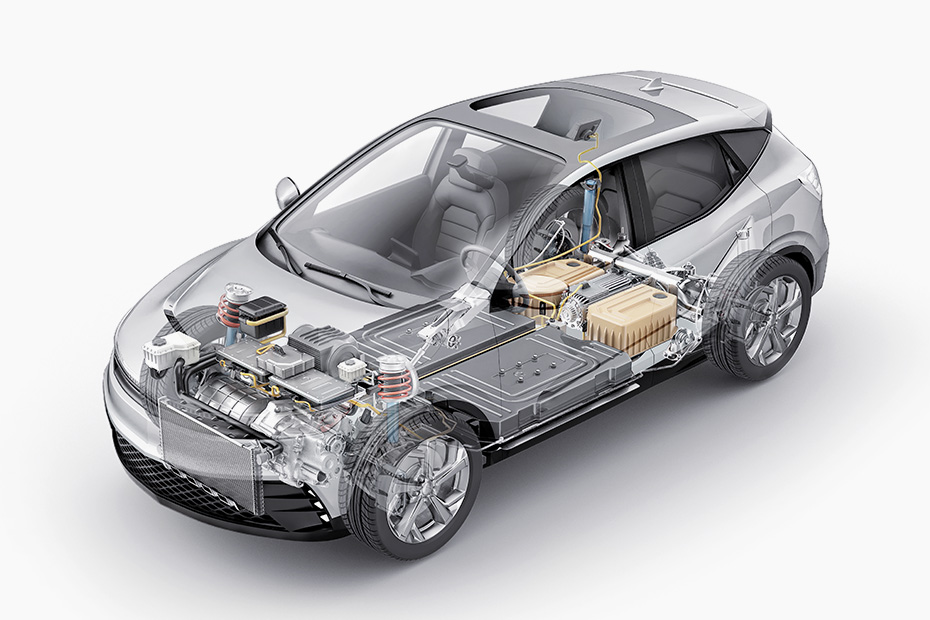Ostfildern-Kemnat, Germany. More and more electric drives are being adopted today, not only in Europe, but around the globe. In the automotive sector, as well as in local public transport, freight transport or in agriculture. Depending on the technical requirements, the electric motors necessary for these applications increasingly need to be more powerful. This results in higher thermal loads that components and materials have to withstand, both in the short and the long term. Effective thermal management can counteract a loss of performance from these motors as a result of excessive temperatures. WEVO-CHEMIE GmbH has therefore developed highly thermally conductive materials that can be used to encapsulate stators and winding heads in electric motors. These products – which are primarily based on epoxy resin and silicone – are optimised for, among other things, the short cycle times required in the automotive industry, and they enable the motor to feature a higher power density.
Facilitating the required performance despite the limited amount of installation space available in vehicles is one of the challenges that faces the developers of electric motors – particularly when it comes to high-performance motors in which significantly more heat is generated in the stator winding. Sophisticated thermal management is required to counteract a drop in the motor’s performance caused by excessively high operating temperatures. To this end, Wevo has developed potting compounds specially adapted to electric motors that can be used to fully encapsulate stators and pot winding heads.
Benefits gained through (full) encapsulation of stators and winding heads
When potting winding heads, a thermally conductive potting compound is used to ensure the thermal connection of the winding heads to the stator frame. This enables efficient dissipation of the heat generated, which is particularly important since the level of heat loss in the stator is proportionally highest in the winding heads. In addition, potting the winding head ensures that the welding contacts are electrically insulated and protected against corrosion, solder joints are protected against vibration. Moreover, the smaller clearances between the individual welding contacts of the winding head make it possible to reduce the number of grooves, what are known as “winding slots”.
Full encapsulation of the stator also results in dissipation of the heat losses that arise from the stator winding being connected to the stator frame. In this way, full encapsulation offers an alternative to conventional cooling methods, such as direct cooling of the laminations or internally cooled (hollow) copper wires or tubes. By eliminating the liquid coolant and improving thermal management, it is also possible to make the components smaller – and save on raw materials such as copper. In addition, Wevo’s products offer protection against vibration within the stator, which helps to prevent potential wear, cracks in the primary insulation, as well as short circuits within the windings. What’s more, full encapsulation of the stator reduces high-frequency noise that occurs when the electric motor is in operation and can be annoying for the driver.
Thermally conductive materials from Wevo enable fully automated production process
The epoxy- and silicone-based materials developed by Wevo offer very good resistance to the high operating temperatures (up to 180 °C) that are particularly prevalent in high-power electric motors in continuous use. In addition, they also have a high filler content and can therefore exhibit not only high thermal conductivity, but also a low coefficient of expansion. In combination with the resulting crack resistance, the compounds meet the demanding requirements of thermal shock tests, in which components are deliberately put under stress by being exposed to short-term, extreme changes in temperature.
The compounds are also resistant to chemicals such as coolants and automatic transmission fluids (ATFs); and the epoxy systems also adhere very well to metals. The specific selection of fillers used in the epoxy-resin- and silicone-based potting compounds also prevents the formation of cracks over the entire life cycle.
Rapid cycle times are crucial in the production process – particularly in the automotive sector. The specially adapted flow behaviour and fast curing properties of Wevo’s materials may accelerate these times. Their good flowability ensures void-free filling of cavities – especially when potting under a vacuum. This allows copper windings and hairpins to be fully encapsulated. Despite their very high filler content, Wevo’s materials have excellent flow properties and fill even the smallest design-dependent cavities. This plays a big role in preventing partial discharges and electrical breakdowns. Following the actual potting process, the materials cure in line with the specific requirements, ensuring downstream processing can be commenced very quickly.
Customisation of the compounds for further applications
In addition to being suitable for high-power electric motors, Wevo’s potting compounds can also be adapted for use with auxiliary units of electric motors or self-driving vehicles, for example control units, battery management systems or on-board chargers. In addition, other components of the electric drive train, such as batteries or inverters, as well as power electronics in general, can be encapsulated with the products described.
Image source: © matis75 – stock.adobe.com
